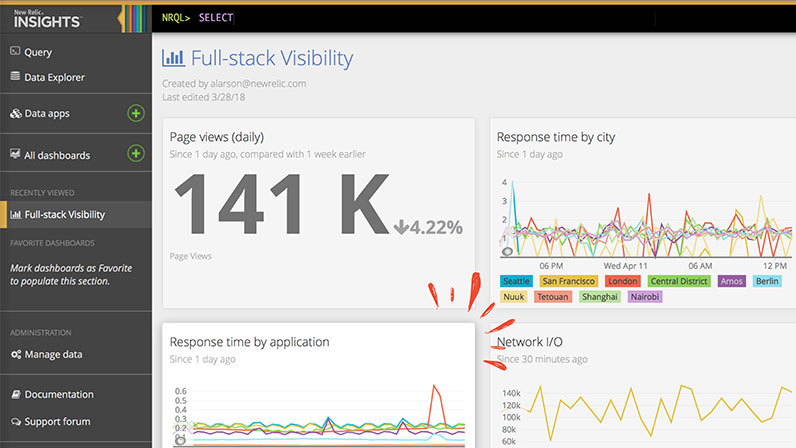In today’s digital landscape, ensuring the optimal performance and reliability of applications and services is paramount. Synthetic monitoring has emerged as a crucial tool for organizations to proactively detect and address issues before they impact end-users. New Relic, a leading provider of observability solutions, offers robust synthetic monitoring capabilities to help organizations maintain a superior user experience. In this guide, we’ll delve into how to get synthetics monitoring to work effectively in New Relic, covering everything from setup to best practices.
Understanding Synthetic Monitoring

Before diving into New Relic’s synthetic monitoring capabilities, it’s essential to grasp the fundamentals of synthetic monitoring. Synthetic monitoring involves creating artificial transactions that mimic real user interactions with your application. These transactions are executed at regular intervals from various locations to simulate different user scenarios
How to Factory Reset HP Laptop
Types and Uses of a Hologram Projector
The Benefits of Synthetic Monitoring
synthetic monitoring offers several benefits, including:
- Proactive Issue Detection: Synthetic monitoring allows you to identify performance issues and errors before they impact real users, enabling proactive resolution.
- Performance Benchmarking: By establishing baseline performance metrics, synthetic monitoring helps track performance trends and measure improvements over time.
- Geographic Insights: Synthetic monitoring from multiple locations provides valuable insights into regional performance variations, helping optimize the global user experience.
How to Get Synthetics Monitoring to Work in New Relic
To set up synthetic monitoring in New Relic, follow these steps:
- Sign Up/Log In to New Relic: If you haven’t already, sign up for a New Relic account or log in to your existing account.
- Access Synthetics: Once logged in, navigate to the Synthetics section. You can find it in the main menu or by searching for “Synthetics” in the dashboard.
- Create a Monitor:
- Click on the “Create a Monitor” button.
- Choose the type of monitor you want to create (Simple, Browser, or API).
- Fill in the required details like name, URL, frequency, location, etc., depending on the type of monitor you selected.
- For API monitors, you’ll need to define the request details such as method, endpoint, headers, etc.
- For Browser monitors, you’ll have options to select the browser type, connection type, and device type.
- Configure Assertions (if applicable):
- Assertions define what you expect to find on the page or in the API response. You can set up various types of assertions depending on your monitoring needs.
- Set Up Alerts:
- Configure alert policies so that you are notified when a monitor fails or behaves unexpectedly.
- You can set up alerts based on specific conditions like response time, status code, content validation, etc.
- Review and Save:
- Review all the settings you’ve configured for your monitor.
- Save the monitor to start monitoring your application or API.
- View Results:
- Once your monitor is set up, you can view the results in the Synthetics dashboard.
- You can see response times, status codes, errors, and other relevant data for each monitor.
- Analyze and Optimize:
- Use the data collected by synthetic monitors to analyze the performance of your application or API.
- Identify areas for optimization and improvement based on the insights gathered from synthetic monitoring.
- Iterate:
- Continuously review and iterate on your synthetic monitoring setup to ensure it meets your evolving monitoring needs.
- Update monitors, assertions, and alert policies as your application or API changes over time.
By following these steps, you can set up synthetic monitoring in New Relic to monitor the performance and availability of your applications and APIs.
Best Practices to Maximize the Effectiveness of Synthetic Monitoring In New Relic
To maximize the effectiveness of synthetic monitoring with New Relic, consider the following best practices:
- Diversify Monitoring Locations: Test your application from multiple geographic locations to identify regional performance variations and ensure a consistent user experience.
- Regularly Review and Update Monitors: Regularly review and update your synthetic monitors to reflect changes in your application’s architecture and user workflows.
- Implement Alerting and Escalation Policies: Set up alerting thresholds based on performance metrics and establish escalation procedures to ensure timely response to issues.
- Integrate with Other New Relic Features: Leverage New Relic’s integrations with other features such as APM, infrastructure monitoring, and logs to gain comprehensive insights into your application’s performance.
Synthetic monitoring is a powerful tool for proactively monitoring the performance and availability of your applications. By leveraging New Relic’s synthetic monitoring capabilities and following best practices, you can ensure a seamless user experience and minimize the impact of potential issues. Start implementing synthetic monitoring with New Relic today and stay ahead of performance challenges.
Drake Net Worth: Unlocking Drake’s Fortune
